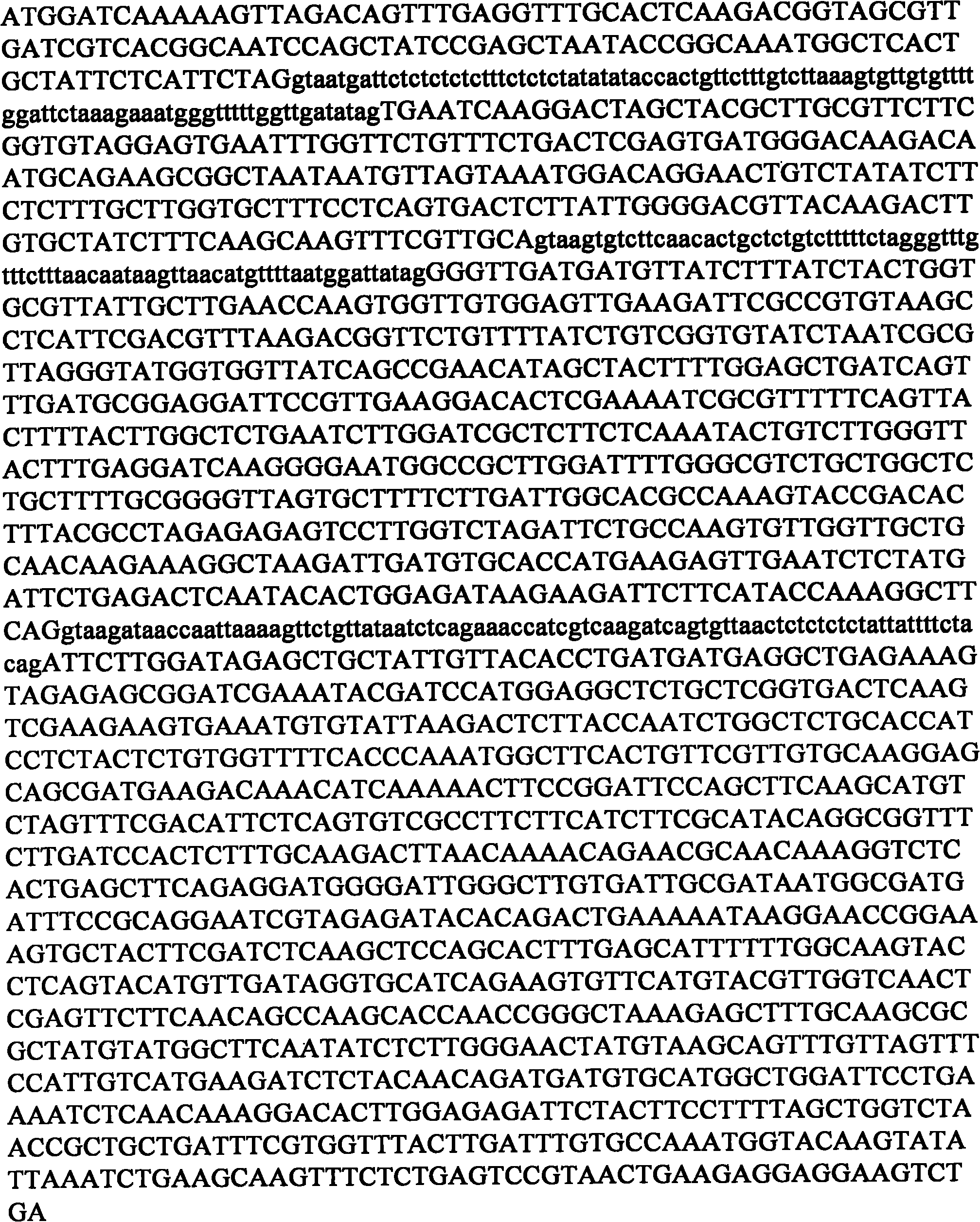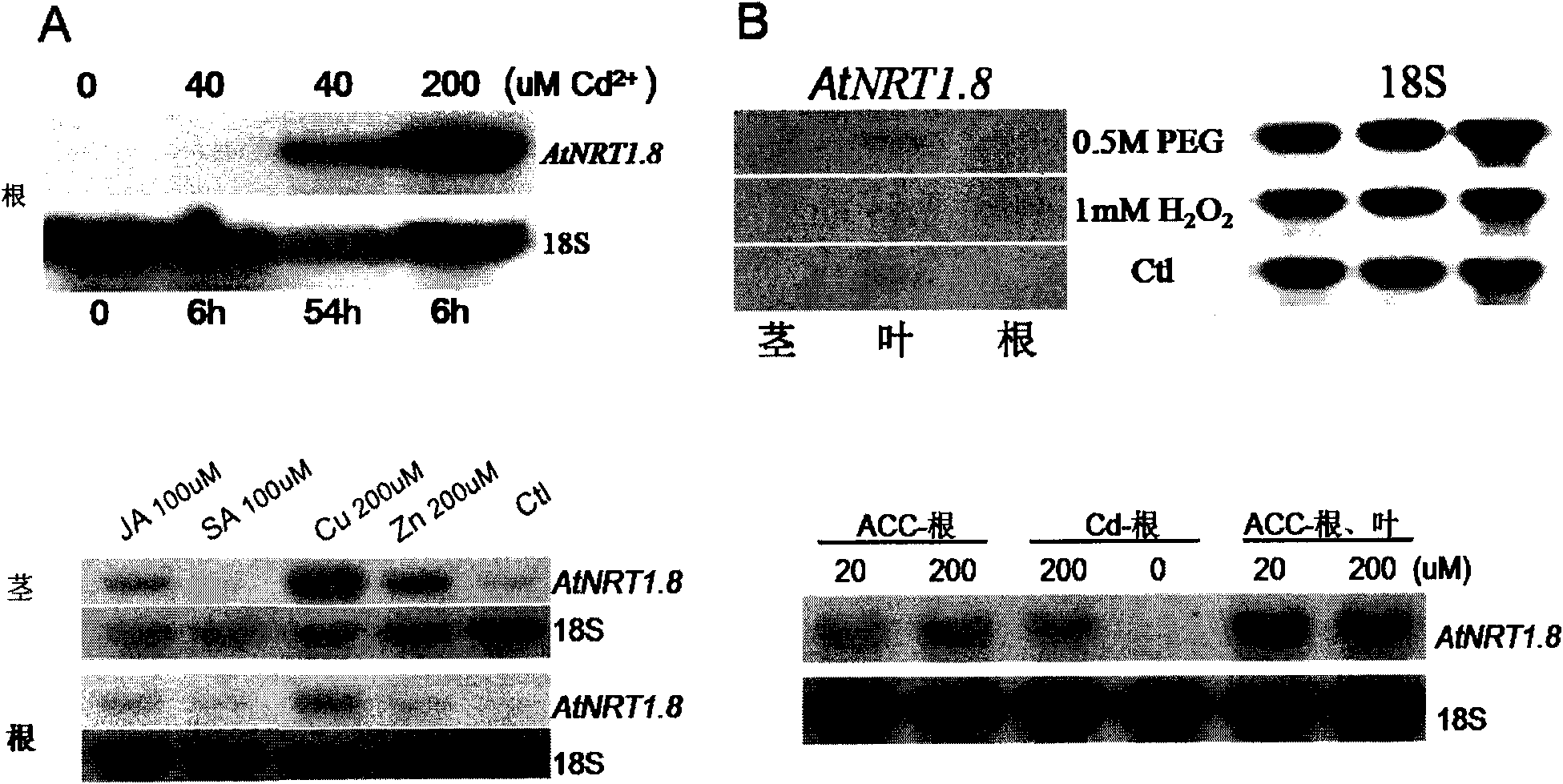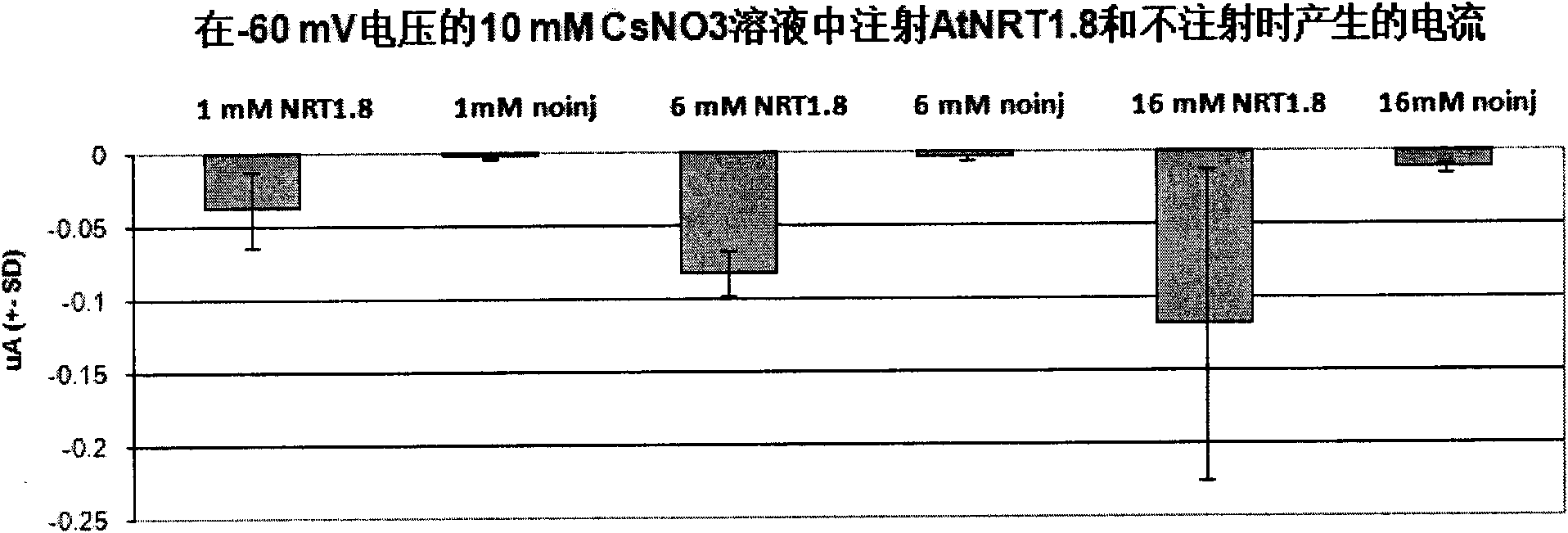Application of AtNRT1.8 gene to strengthening resistance of crops to stress of heavy metals or salts
A technology of atnrt1.8, 1.atnrt1.8, applied in the field of plant bioengineering and plant improvement genetic engineering
- Summary
- Abstract
- Description
- Claims
- Application Information
AI Technical Summary
Problems solved by technology
Method used
Image
Examples
Embodiment 1
[0114] Example 1. Regulatory effects of heavy metals and other stress factors on AtNRT1.8 gene
[0115] Through gene chip analysis, the inventors found that AtNRT1.8 was most strongly induced by cadmium among the 53 POT gene family members (data not shown). The sequence of the AtNRT1.8 gene used in this embodiment is as follows figure 1 shown.
[0116] In order to confirm whether this gene is induced by cadmium as shown in the gene chip, and further reveal whether it is induced by other stress factors, a Northern hybridization test (test method: Northern hybridization in classic plant molecular biology, refer to "Molecular Cloning Experiments") Guide, pp. 532-552).
[0117] The above test results show that the expression of AtNRT1.8 gene induced by cadmium has time- and concentration-dependent effects (see figure 2 A), and basically not regulated by the secondary effects of cadmium stress, osmotic stress and oxidative stress (such as figure 2 As shown in B, PEG is a hi...
Embodiment 2
[0119] Embodiment 2.AtNRT1.8 gene encodes introversion low-affinity nitrate transporter (Nitrate transporter)
[0120] The AtNRT1.8 gene belongs to the PTR gene family, also known as the NRT1 family or the POT family. Since this family of genes has been found to encode both nitrate transporter and oligopeptide transporter, in order to detect the transport substrate of the protein encoded by the AtNRT1.8 gene, the inventors studied AtNRT1 by injecting Xenopus oocytes. In vitro transport activity of 8 genes.
[0121] Test method: The coding sequence of AtNRT1.8 gene and the UTR sequences at both ends were subcloned into pGEMHE vector, transcribed into cRNA in vitro, injected into Xenopus oocytes (obtained from Capital Normal University), and electrophysiologically analyzed (voltage clamp Purchased from Dagan Company, the model is TEV-200A VOLTAGECLAMP). Test results such as image 3 shown.
[0122] The results showed that the protein encoded by AtNRT1.8 gene specifically...
Embodiment 3
[0123] Example 3. Expression and localization of AtNRT1.8 gene in Arabidopsis
[0124] Determining the tissue expression characteristics and subcellular localization of genes plays an important role in clarifying the mechanism of action of genes. Therefore, the inventors further studied the expression and localization of the AtNRT1.8 gene in Arabidopsis.
[0125] Referring to the method described in Dawar Hussain et al., The Plant Cell "Plant Cell", Volume 16, 1327-1339, the promoter region of the gene is fused with the reporter gene GUS, or the coding frame of the gene is fused with the reporter gene GFP for Transform Arabidopsis or onion epidermal cells. In situ hybridization, the forward sequence and reverse sequence of AtNRT1.8 were used to hybridize with the mRNA of tissue native. Test results such as Figure 4 shown.
[0126] The results showed: GUS histochemical analysis showed that the expression of AtNRT1.8 gene was mainly expressed in the vascular system of pla...
PUM
 Login to View More
Login to View More Abstract
Description
Claims
Application Information
 Login to View More
Login to View More - R&D
- Intellectual Property
- Life Sciences
- Materials
- Tech Scout
- Unparalleled Data Quality
- Higher Quality Content
- 60% Fewer Hallucinations
Browse by: Latest US Patents, China's latest patents, Technical Efficacy Thesaurus, Application Domain, Technology Topic, Popular Technical Reports.
© 2025 PatSnap. All rights reserved.Legal|Privacy policy|Modern Slavery Act Transparency Statement|Sitemap|About US| Contact US: help@patsnap.com



